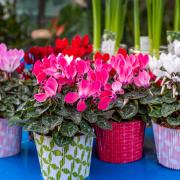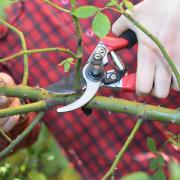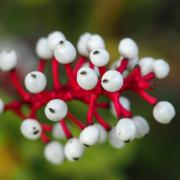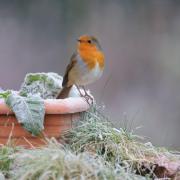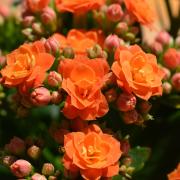The autumn garden can be as colourful as the summer one, but it’s not only the brilliance of flowering plants like rudbeckia and dahlias which set the scene, it’s the fantastic hues you get as the leaves turn to buttery yellow, burnt orange and lava red.
Plants which produce spectacular leaf colour in autumn generally look their most impressive in the sun, especially if they are backlit, so their leaves produce a colourful stained-glass window effect display.
So, which are the plants which will give you showstopping leaf colour as the weather cools?

The smoke bush is a shrub which will see you through a number of months, with its delicate pink summer flower plumes which appear smoke-like giving way to a sizzle of colour as its leaves turn from light green to eye-catching red and orange. Plant it in moist, well-drained soil and prune it if you need to after flowering.

If you love brilliant red in the autumn, then this shrub, which can grow 2m x 2m, is the one for you. Yes, there are smaller, variegated evergreen types which are often used as fillers in winter hanging baskets, but it’s worth considering this deciduous candidate which will give you a foliage display of deep flame leaves.

There’s a Japanese maple for every garden, whether you want a deep burgundy large specimen casting shadows over other shrubs and plantings, or you just want to add a touch of elegance in a pot on your patio, delicate foliage wafting in the breeze. Among my favourites is ‘Bloodgood’, which can grow quite big at 4.5m x 4.5m, but will give you striking purple leaves, which turn blood red in autumn. For pots, good choices include Acer palmatum var. dissectum, a dome-shaped tree whose mid-green leaves turn golden in autumn. The varieties ‘Sango-kaku’, whose leaves turn to butter yellow in autumn, and ‘Osakazuki’, which produces scarlet autumn colour, are also favourites.

These small trees have become more popular in recent years, having been highlighted at garden shows including Chelsea and for good reason – they may be the best tree you can have in a small space and earn their place because they provide interest throughout the year. They bear pretty white flowers in profuse sprays in spring, while in autumn their leaves turn to scarlet red and fiery orange.

Many flowering dogwoods produce flame-coloured autumnal accents, including Cornus ‘Porlock’, which grows quickly and soon becomes broad, with spreading branches and bracts which turn from green to white and blush pink. Cornus florida has unusually curled leaves which open to petal-like white bracts surrounding yellow-tipped, green flowers in spring and the leaves turn from pink to red and purple in autumn. Check when you buy, but many will grow to just 3 x 3 metres in 20 years, making them ideal choices for smaller spaces.

Another easy-to-grow specimen which is good for smaller gardens and can even be grown in a pot is this deciduous multi-stemmed tree with glossy red leaves which gradually turn to beautiful shades of orange red, yellow and purple in the autumn. They are best shown off where the sun can backlight the autumn foliage which appears almost translucent.

The oak-leaved hydrangea is so named because of its large, impressive leaves which are shaped like those of an oak and turn to bronze-crimson in autumn before they fall. This deciduous shrub, which has a loose, open habit, produces large white conical flowerheads at the end of the branches in late summer which fade to pink. It likes a damp site in semi shade in moist soil enriched with organic matter.

Anyone who wants to shroud their fence or wall in brilliant colour (but must be prepared to work to keep it under control) should consider Boston ivy (Parthenocissus tricuspidata), preferably planted on a north-facing wall. This vigorous climber’s leaves turn to deep red and crimson in autumn when the nights start to turn cold. Just be aware that it is potentially huge and self-clinging, so you will need plenty of room, although you can hack it back in mid-winter to keep it under control.



